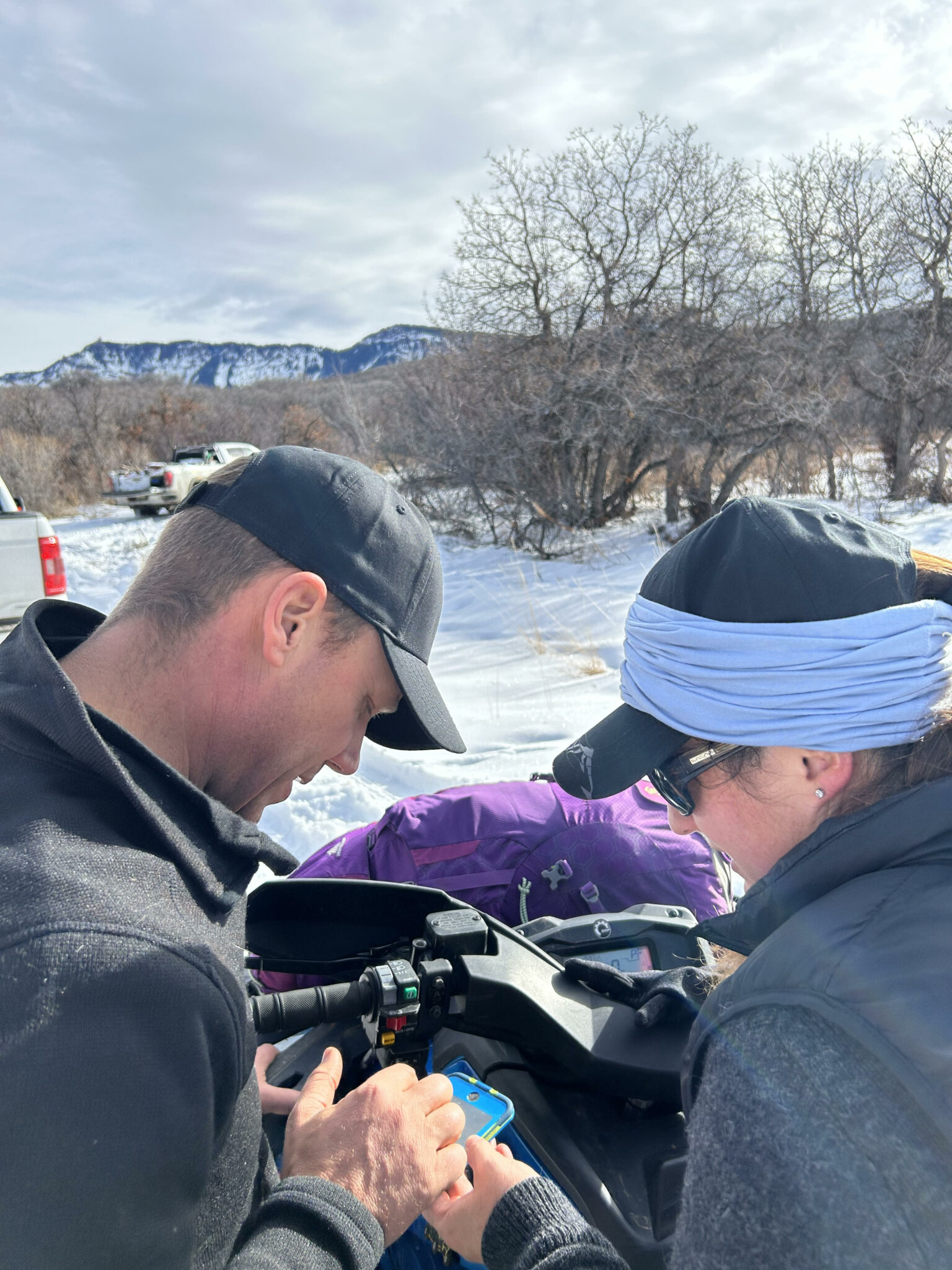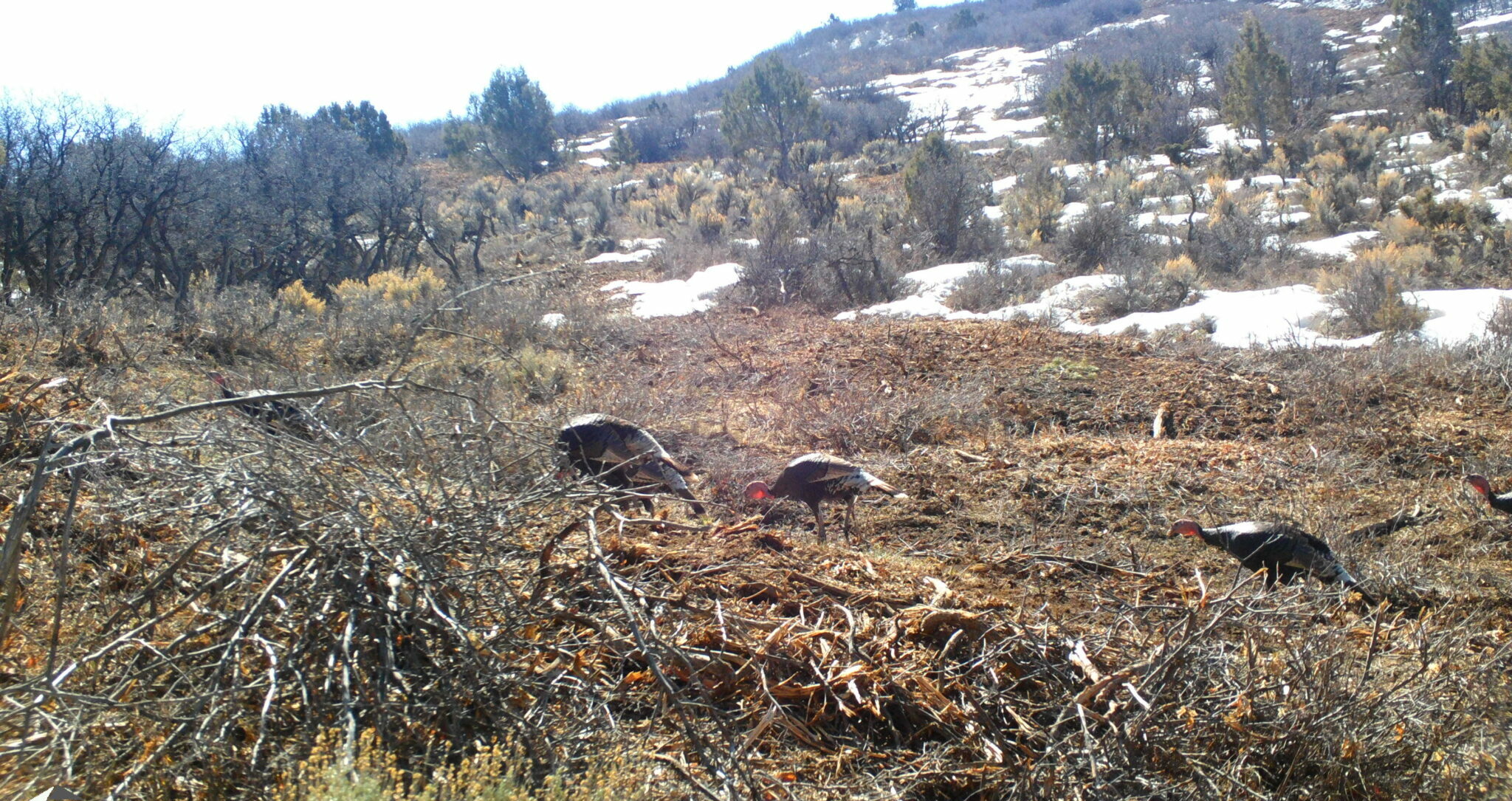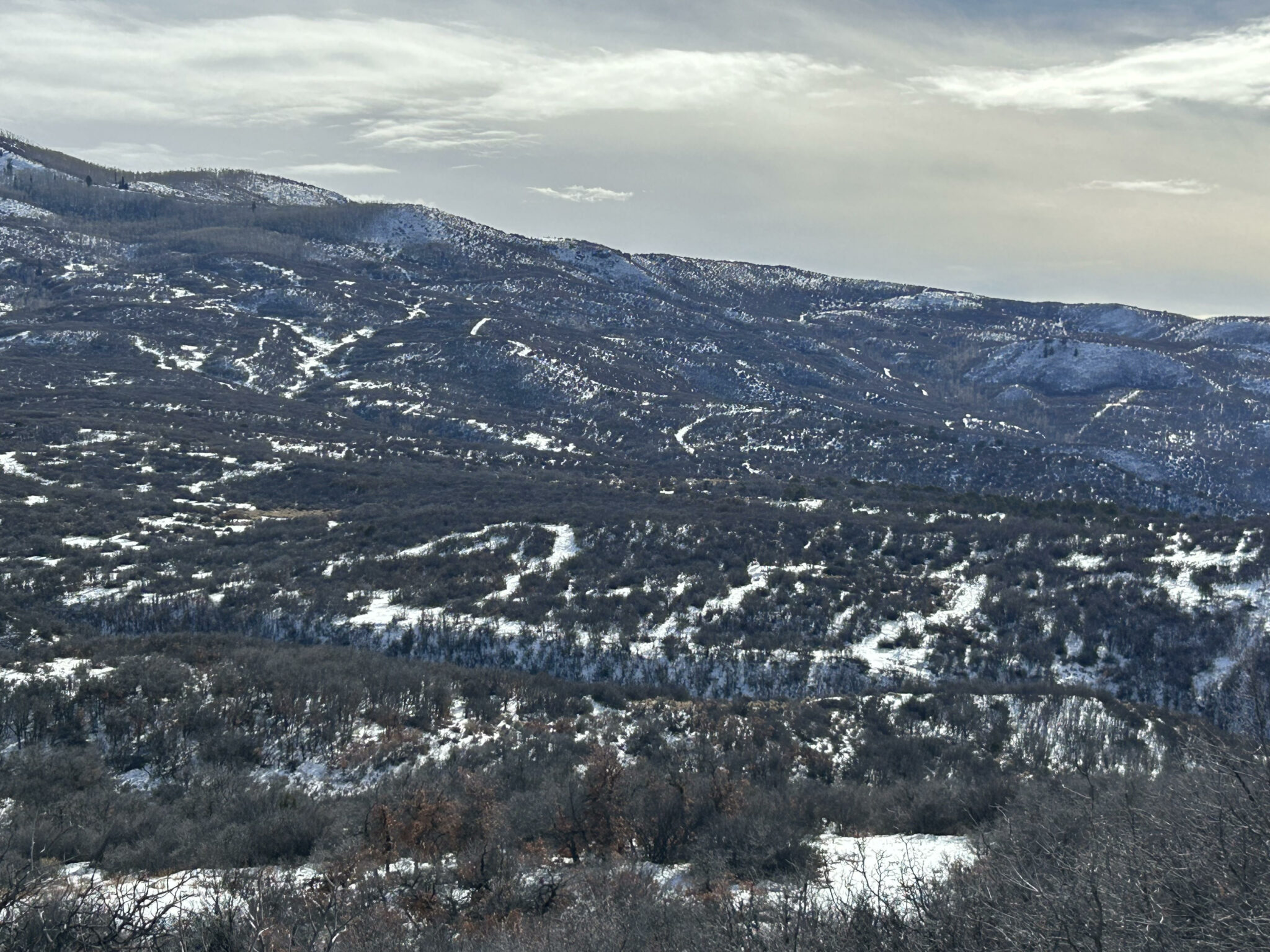As I drive over the mountains, it occurs to me that I am in for a special treat. A rangeland specialist, my focus is on the shortgrass prairie, and though I love the mountains, they are usually nothing more than a soft blue haze on the horizon – I rarely visit. I prefer the wide-open space of the grasslands, the undulation of the minor topography, the whispers of constant wind that gestures directions to the cattle and offers flight to land cruising Northern Harriers. Today though I’m headed deep into the mountains of Crawford, Colorado and I’m all parts awe and excitement. Being led by Marcella Tarantino, Bird Conservancy’s Senior Wildlife Biologist, is the other part making this extremely special. She has invited me to her territory and is taking me onto a ranch owned by Cody Neff that she has watched transform from an overgrazed mountain into habitat for wildlife of many species: cutthroat trout, black bear, elk, mule deer, mountain lions, dusky grouse, foxes, bobcats, turkeys, and a variety of other bird species. This is a special place with a large elevation gradient, perfect for creating diverse habitats for this plethora of wildlife.
- A Trail Camera photo of Wild Turkeys utilizing the landscape
- The work being done on Cody’s property.
I follow Marcella’s guidance to find landmarks, my eyes unaccustomed to this range of elevation, stands of fir look the same and the ridge lines are deceiving. There is a herd of elk and I need binoculars and patience. She waits and smiles, there is no rush. The weather is just about perfect for December. Middle 40s and sunny; layers are removed and the mud becomes slick grease as the snow melts. We wade through knee deep snow, tracking in areas opened through mountain shrub mastication treatments. Historically thinned by wildfire, most of Cody’s ranch is now overgrown with crowded and homogenous mountain shrub (oak, serviceberry, and snowberry) stands – the mastication treatments help to create corridors and meadows for wildlife and livestock, firebreaks, and creates habitat diversity. The amount of animal movement in these pathways has us thrilled, pointing from one area to the next. We see tracks for elk, deer, rabbits, and coyotes – not all the species on the ranch, but a lot of tracks to see so recently after fresh snow. It’s exactly as she’d hoped, and exactly what the science predicted, but until we came and observed, we couldn’t confirm; in our conservation world having this documentation is critical. I can tell she is relieved and even more so because the truth of this success is being shared – it’s not only her observations, mine too, and those of the landowner – there are ways to successfully improve wildlife habitat.

Senior Wildlife Biologist, Marcella Tarantino, working with the landowner of the property, Cody.
It is tempting to give the machinery and their expert drivers the majority of the credit for doing the literal heavy lifting and knocking down (and their incredible ability to maneuver around huge rock outcroppings). But that obscures the other heroes of the story, Marcella and Cody, their collaboration, their mutual trust, and their willingness to work together, through trial and error to find solutions, try new avenues, and to be creative. This is how wildlife habitat is built – on the back of envelopes – in the sunshine, and the rain, under snowpack, in the cab of Marcella’s truck, with cellphones, and apps that store way points, phone calls and visits, under the curious gaze of Evening Grosbeaks, and while watching out for bears. This relationship between biologist and landowner is the foundational seed, without it nothing grows, but with within its watershed, tended and trusted, there is infinite possibility. Which is why this project continues; there is more to do, more plans this spring and summer. The wildlife is responding with a resounding YES, and so am I!
- Program Manager, Southern Great Plains, Rachel Belouin
- Senior Wildlife Biologist, Marcella Tarantino
This blog was written in collaboration by our Program Manager for the Southern Great Plains, Rachel Belouin and Senior Wildlife Biologist Marcella Tarantino. CLICK HERE to learn more about our stewardship work.






